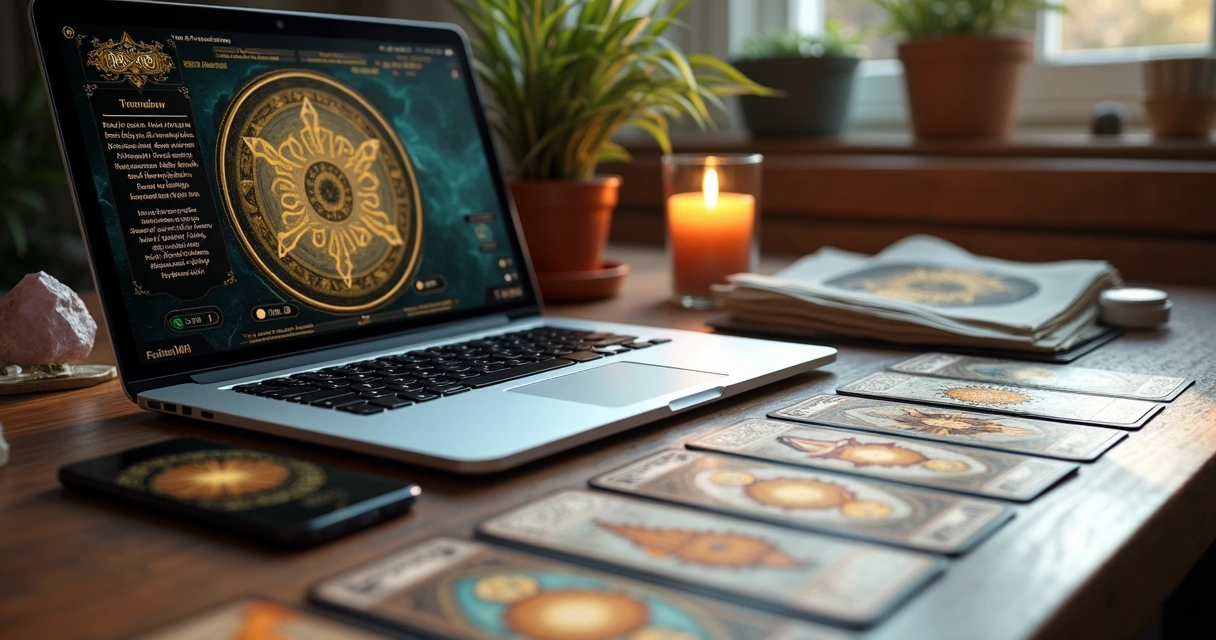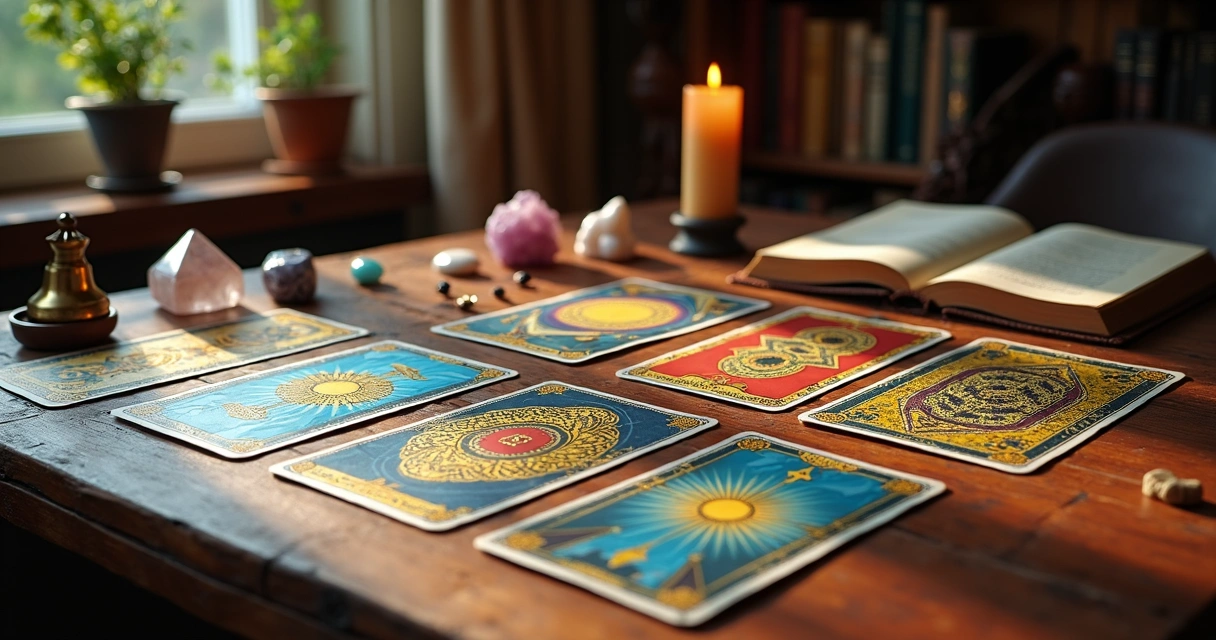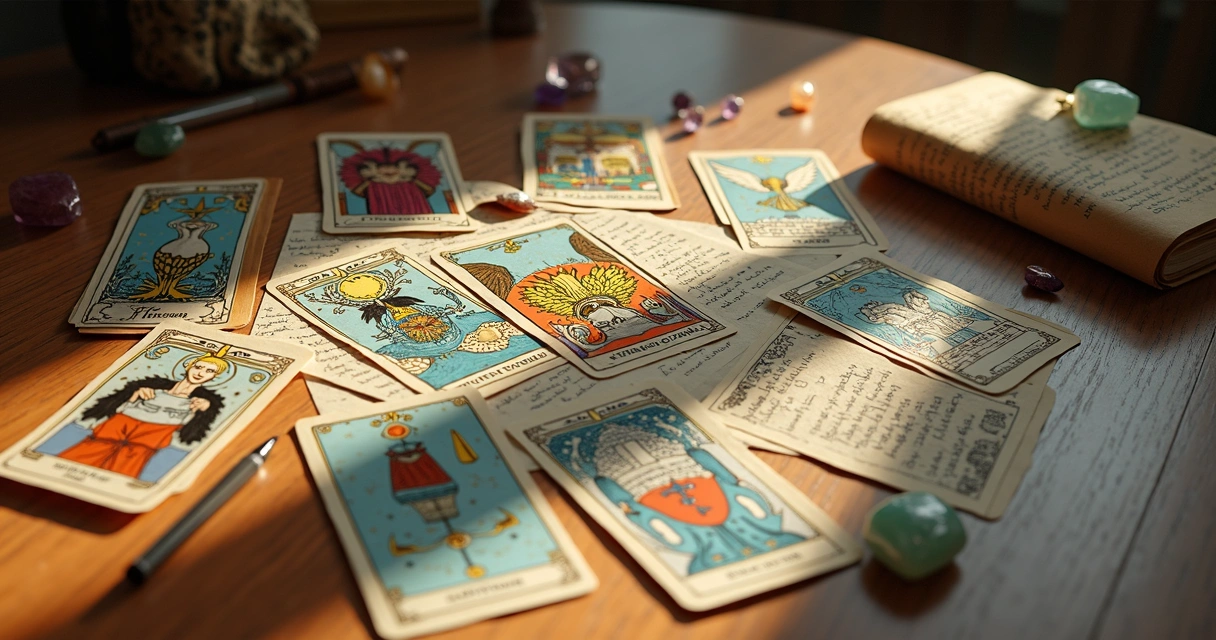If you work with tarot, you know every minute counts. Readings, notes, client messages, and all those little admin tasks eat into your day. Maybe you’re wondering how some tarot professionals seem to handle more clients, deeper readings, and regular posting—all while keeping their sanity. Here’s a secret: they’re using digital tools to do the heavy lifting.
This list brings together ten digital tarot tools designed to give you back your most precious resource—your time. They help you spend less of it on repetitive, draining tasks and more on the magic.
Save your energy for insight, not the inbox.
1. Scheduling and booking automation tools
Juggling reading requests, follow-ups, and reminders can be surprisingly draining. You’ve probably had days where you wished you had someone else just to manage your calendar! Appointment automation has become a quiet hero for tarot practitioners.
Tools like EasyWeek are designed specifically with tarot professionals in mind, handling everything from client bookings to reminders, and even payments with automated notifications. Integration with mobile calendars means clients can pick their preferred slot, reschedule with a click, and get timely reminders, cutting out endless email chains. Online booking widgets also make your website feel more professional and approachable—not a small bonus.
- Tip for faster reading days: Set aside specific windows for readings in your calendar. This helps you manage both your appointments and your downtime.
An organized calendar means less chaos, more clarity.
2. digital spread generators and libraries
Most tarot readers have a handful of favorite spreads, but reaching for a new layout for special questions can take time. Digital spread generators house tried-and-true layouts and let you customize your own in seconds.
Platforms like Visual Tarot, with their robust Spreads Manager, let you pull, edit, and save a library of digital spreads for different occasions and manage personal notes. No fumbling for old notebooks or drawing blocks. Many let you export a layout or integrate it directly into a digital reading.
- Actionable setup: In your next slow hour, digitize your go-to spreads and label them by theme—relationships, career, new moons, etc. That way, when a client comes with a distinct need, you’re ready in seconds.
You’ll be surprised by the creative ideas that flow when you’re not stuck re-drawing the Celtic Cross for the tenth time.
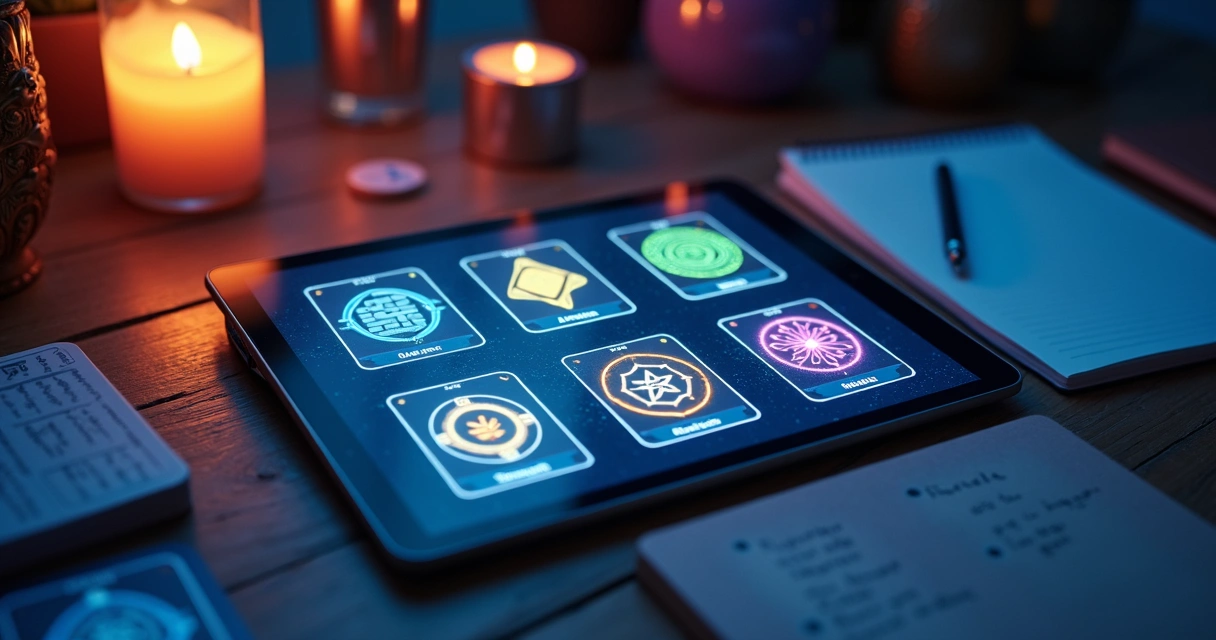 3. digital card meaning libraries
3. digital card meaning libraries
Card meanings are the bedrock of tarot work. But let’s be honest—sometimes, even the pros want a quick refresher. Digital card meaning libraries offer searchable, deep archives of meanings (including reversals, symbols, and sample interpretations).
With large databases just a click away, you can instantly call up layered meanings, alternative takes, and reference so many decks at once. It’s almost like carrying a bookshelf everywhere.
- Integration shortcut: Bookmark your digital card library on your phone for instant reference during readings. It’s a confidence boost when you want to space out from rote keywords and dig into a card’s subtlety.
Never blank on a card again.
4. digital deck vaults
Collectors know: managing twenty different decks took up real estate in your bag and your mind. Digital platforms such as Deckible allow you to access hundreds of digital decks from your device, ready to shuffle and draw at any time for a vast digital library.
These tools often support personal notes, custom shuffling, and deck combination for super-personalized readings. Reducing the deck shuffle to a tap saves physical wear and tear (and saves your back, too).
- Quick win: Try mixing decks digitally to create new themes or moods for clients—there’s no need to buy or store another set.
And, small bonus, they’re probably better for the planet.
5. instant CRM solutions for tarot professionals
Tarot isn’t just spiritual work. If you’re running a business, you’ll know the admin load grows fast. A purpose-built digital CRM, like MysticLog, puts client data, reading histories, and communication history together in one place, while supporting your workflow with reminders and dashboards.
You’re not flipping through paper notebooks, looking for that one querent who always asks about new jobs right before Mercury retrograde. Instead, you have timelines, context, and even trend analysis right at hand. MysticLog goes further, drawing on patterns across your practice to help you spot new services and opportunities.
- Immediate action: After each reading, log the session’s main outcomes in your CRM. The first few times might feel tedious, but three months on, you’ll be amazed at the tapestry you’ve woven.
Memory fades, but the log remembers.
6. mystical ai assistants
There’s a new tool quietly changing the game: mystical AI assistants. MysticLog, for instance, offers an AI chat built for mystic work. This AI helps you decode complex readings, suggests fresh perspectives, and adapts communication styles to match clients’ energy.
It also guides students through card or rune meanings, helps structure interpretations, and offers prompts for deeper learning. The best part? You can test ideas, clarify doubts, and brainstorm with an entity that never judges and never gets tired. (Well, it’s AI. But you get the point.)
- Try this: After doing a challenging reading, use the AI assistant to discuss what stands out. Sometimes the act of putting your thoughts into words brings unexpected clarity.
This is like having a wise sidekick at every reading.
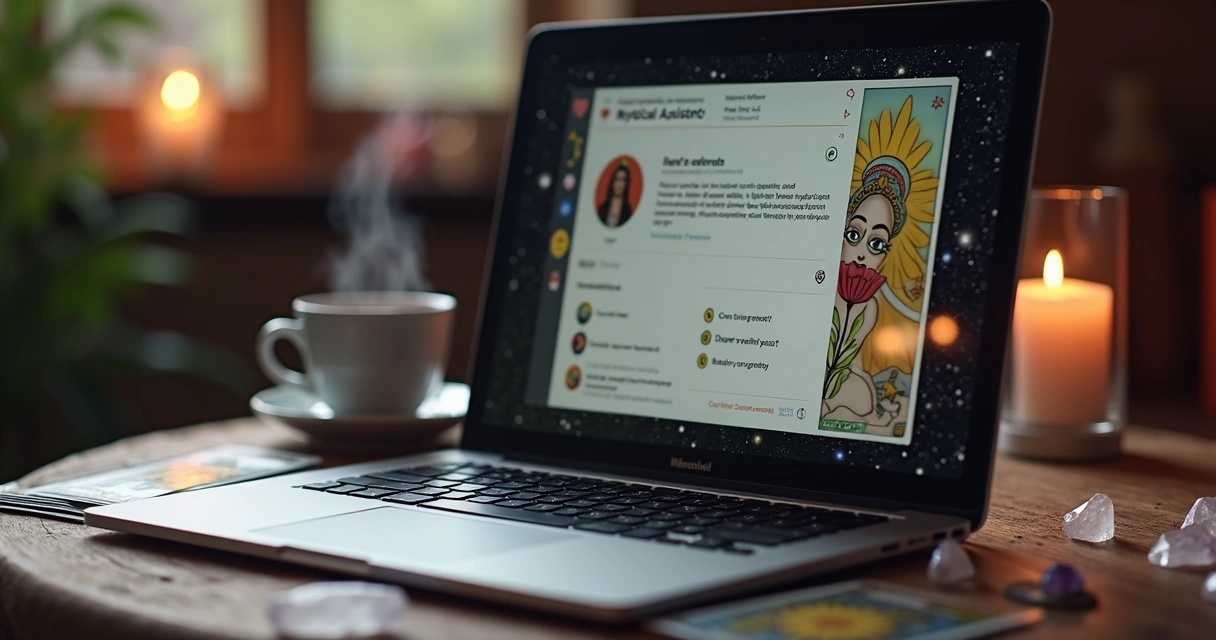 7. digital journaling and reflection platforms
7. digital journaling and reflection platforms
Every reading you do gives you a little more wisdom. But sorting back through handwritten journals takes up time you don’t always have. Enter digital journaling platforms built to reflect on spreads, readings, and even your learning journey.
These apps let you upload photos, voice notes, and track your growth week by week. Entries can be searched instantly, sorted by tag, and even shared if you want commentary from a peer or mentor.
- Easy upgrade: Write or dictate quick summaries after every client or personal reading. Patterns you might otherwise miss come out under your fingertips.
A few words today, a library tomorrow.
8. collaborative online reading boards
Sometimes a reading is best as a shared journey. Platforms like Moonlight offer collaborative spaces for multiplayer tarot readings, group mentorship, and co-created spreads with personalized multiplayer rooms. Invite clients—near or far—into a digital reading room where you can share your screen, shuffle cards together and interact in real time.
- One practical step: Offer special group events (new moons, solstices, etc.) where participants can join you on the board. It’s a gentle way to build community and attract new clients at once.
Online boards aren’t just for group readings. They’re inspiration for community circles, too.
9. analytics dashboards for tarot trends
It’s one of those things nobody teaches: tracking your own business patterns. How many readings did you do last month? What kinds of questions came up? When do you see a surge and when things slow down?
Modern analytics dashboards, such as those inside MysticLog, help you visualize trends over time, so you see patterns at a glance. This shows you which offerings resonate, when to launch promotions, and where you might want to study more.
- Set a monthly reminder: Take ten minutes at the end of each month to review your analytics and jot down one takeaway. Simple, but with surprising impact on your business direction.
See the bigger pattern. Shape your next step.
 10. template and resource managers
10. template and resource managers
Every tarot professional has signature reading templates—email outlines, PDF reports, follow-up messages. Resource and template managers help you save these as ready-to-use documents.
Organizing content means you aren’t rewriting the same email or PDF over and over. Need to deliver a relationship reading? Pull up your standard template, tweak a few lines, and send. Consistency feels reassuring for clients too.
- Time-saving tip: Whenever you write a response or report you’re proud of, save it as a new template. After a couple months, you’ll have something for every kind of reading.
Templates aren’t just “cheats”—they’re like little time machines.
Wrapping up: making digital tools your tarot allies
You probably noticed a theme in all these tools: they’re not meant to replace your intuition, but to hold up the details and chores so you can devote your best self to readings and growth.
Some ideas here add just a little help, and some, like an intuitive CRM or a magical AI sidekick, can change everything. No need to rush and onboard them all at once. Pick one that feels easiest to try, and get to know it. You’ll find a good digital tool never stands in the way of your style—it just lets your practice breathe a little more.
If you’re curious about digital tools fine-tuned for tarot professionals, give MysticLog a look. Whether you’re organizing querents, deepening your learning, or connecting ancient wisdom with modern clarity, MysticLog was designed to keep you moving forward—with less hassle and more inspiration.
Let your practice be magical, not mechanical. Take the leap into intuitive digital support!
Frequently asked questions
What are digital tarot tools?
Digital tarot tools are software or apps designed to support tarot readers in their craft. They include things like digital card meaning libraries, spread generators, CRMs for client management, analytics dashboards, and scheduling platforms. These tools help professionals keep readings, notes, and admin organized, making the business side of tarot smoother.
How do digital tarot tools work?
Most digital tarot tools work through web platforms or mobile apps. You create an account, log in, and use features like digital spreads, automated schedulers, or searchable card meanings. Some connect to your calendar, others to your email, and many sync across devices so your notes and client details follow you wherever you read.
Are digital tarot tools accurate?
Accuracy with digital tools depends on how you use them. For reference tools, digital card meanings are as reliable as their sources. For readings, it’s your own intuition that drives interpretation—the tools just help organize and present information. AI-based platforms, like those combining tarot and astrological insights, provide real-time suggestions based on their programming and the data you enter, which can augment your own insight without replacing it.
Which is the best digital tarot tool?
The best tool is the one that fits your workflow and needs. Some professionals need powerful CRMs like MysticLog, while others value spread generators or appointment automation. It’s less about one-size-fits-all, and more about finding which tools make your work smoother and your day lighter.
Do digital tarot tools cost money?
Some digital tarot tools have free versions with basic features, while advanced platforms may have subscription costs. Premium features like in-depth analytics, large libraries, AI assistance, or multi-user collaboration typically require payment. However, many practitioners find the time saved and organization gained easily justify the cost.

